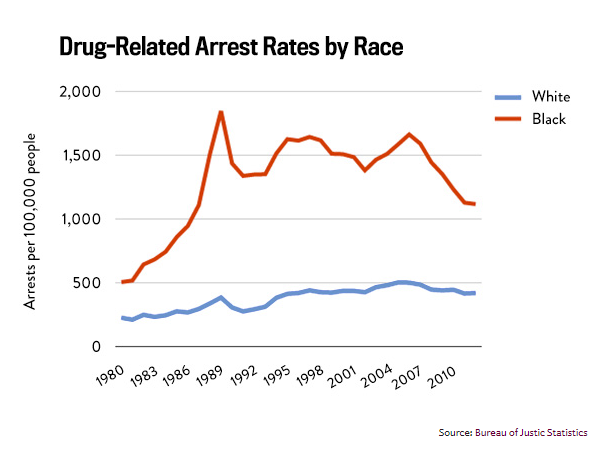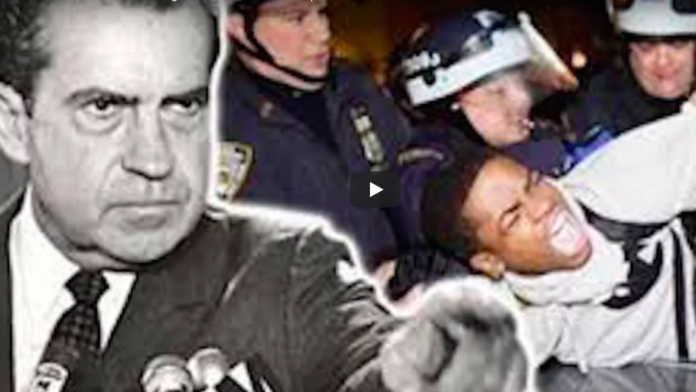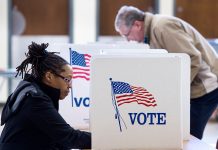Slavery never ended in the United States. Look no further than the modern day prison industrial complex, where prisoners are still little more than numbers on a spreadsheet and bodies to fill orders, for all the proof you need. Starting right after having been “set free” following the Civil War, the United States has funneled them from one system of oppression to another. To this day people of color exist in a system designed to keep them begging for scraps.
This injustice cannot be allowed to continue.
This article is part 3 of a 6 part series on just how we got here and what in the world we can do now. If you missed part 2, check it out here, and catch part 1 here. Next up is former President Richard Nixon and Mass Incarceration.
THE 1970s AND NIXON
In the 1970’s the era of mass incarceration started to emerge. During this time, crime became synonymous with race. Every night on the evening news people tuned in and saw one Black person after another supposedly having committed atrocious crimes. “Criminal” was the word used every single time they showed a picture of a Black person on the news.
That was their plan all along.
Nixon was the one that coined the term “war on drugs.” He created hysteria, much like we see today with Trump and ISIS, or even Trump and Muslims. He convinced white America that all Black people were drug users and violent criminals and proceeded to declare war on them. One of his advisers later admitted that the “war on drugs” was also started so that they could throw more black people in jail.
John Ehrlichman, Nixon Advisor said:
“The Nixon Campaign in 1968, and the Nixon White House after that had two enemies: The antiwar left and black people. You understand what I’m saying? We knew we couldn’t make it illegal to be either against the war or black but by getting the public to associate the hippies with marijuana and blacks with heroin, and then criminalizing both heavily, we could disrupt those communities.
“We could arrest their leaders, raid their homes, break up their meetings, and vilify them night after night on the evening news. Did we know we were lying about the drugs? Of course we did.”
THE SOUTHERN STRATEGY
Nixon, and then Reagan after him used a strategy called The Southern Strategy. Nixon knew that the south was primarily leaning Democrat at the time. He knew if he wanted to win re-election he would have to turn those white Democrats to his side. He knew that he needed to appeal to their inherent racism.
So Nixon used tactics that appealed directly to their inherent racism. He wasn’t the originator of the strategy, but he certainly put it to use. White House Chief of Staff H. R. Haldeman noted that Nixon;
“…Emphasized that you have to face the fact that the whole problem is really the Blacks. The key is to devise a system that recognized this while not appearing to.”
In an interview, Lee Atwater, a campaign strategist for Ronald Reagan described precisely how it all worked. Atwater told the interviewer:
“In other words, you start out. Y’all don’t quote me on this. You start out in 1854 by saying nigger, nigger, nigger. By 1968 you can’t say nigger, that hurts you. … It backfires. So you say stuff like forced-bussing, states rights, and all that stuff. You’re getting so abstract now. You’re talking about cutting taxes. And all of these things you’re talking about are totally economic things. And the by-product of them is blacks get hurt worse than whites.”
THE 1980s, REAGAN, AND CRACK COCAINE
Then came the 1980s. Former president Ronald Reagan was elected the next president by promising to continue the war on drugs and crime. He kept the Southern Strategy as well, it was winning elections for the Republicans, after all. He took things a couple of steps further than Nixon had ever dreamed of doing, however.
Most people in the country weren’t all that worried about drugs at that time. Even though Nixon had tried his damnedest to make them afraid, it wasn’t on their radar. That was the case until Reagan doubled down. He took Nixon’s words “war on drugs” and started an actual war on drugs.
All while this was going on, the ill-conceived trickle down economics plan was also in the works. The disparity in income that existed grew even more substantial. People living in the inner cities were desperate to earn a living, and many turned to dealing or running drugs just to make ends meet. When you have mouths to feed, there isn’t much you wouldn’t do to make that happen.

When all the jobs have moved to the suburbs, and there are no options, people will do what they have to to feed their families. You would do the same.
Remember, that to this day that 26.5 percent of Black people live below the poverty line. Compare that to just 11 percent of white people. Another shocker is that Black people represent 12.7 percent of the population. Only 15 percent of them use drugs. 72 percent of all drug users are white. However, a full 36.8 percent of drug arrests are people of color.
People of color had gotten to use the same bathrooms as the rest of us (crumb), but their economic opportunities had dried up. Jobs were impossible to come by, and they were being thrown in jail in increasingly shocking numbers.
CRACK
Then came crack. Please note: Crack and cocaine are the same thing – made from the same drug. The only difference is that crack has some baking soda added, and then cooked, so it looks like a rock instead of being powder. That way you can smoke it instead of inhaling it as people do with cocaine.
The other difference between the two is where one goes to purchase them. Not only then, but to this day. Crack can be found in the inner cities, at costs much lower than what people pay for cocaine. Cocaine can be found in the suburbs and comes with a pretty hefty price tag.
In Reagan’s day, crack hit the inner cities with a vengeance. It’s a rabbit hole I won’t go down in this piece how the crack got there, as there are rumors it was our own Drug Enforcement Agency. With shocking speed, Congress passed mandatory sentencing laws. Well, maybe not so shocking considering everything we now know to be the truth. Convictions for crack cocaine were astronomical compared to those for cocaine.
Congress ignored empirical evidence concerning what crack was, and as part of the AntiDrug Abuse Act of 1986 created a 100-to-1 disparity between the amounts of crack cocaine and cocaine needed to trigger a mandatory sentence. What this meant was that one ounce of crack brought the same sentence as 100 OUNCES of cocaine.
They only just lowered it to 18-to-1 in 2010, which is still ridiculous. It’s the same drug, for heaven sake.
As you can see, year after year, decade after decade, people of color have been controlled through the use of new laws, campaigns of misinformation, lies, and violence and we are only up to former President Bill Clinton. If you think that people of color got a fair shake under him, think again. He may be popular among them, but when he was president, he did people of color no favors.
Quite the opposite holds true.
This is part 3 of a 6 part series on how we got to this place with people of color, and why systems of oppression in this country need to be examined and eliminated, and that starts with YOU. Read on to find out how you can help make it better in this country for people of color. They have been waiting for over 150 years for us to start, it’s high time we did.
Click here to Keep it Real and read some real-life stories about just how unfair and unjust this system really is.
Featured Image Via YouTube Video.











